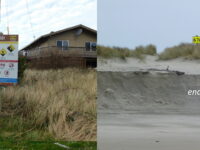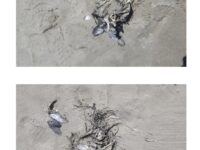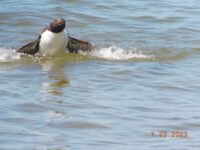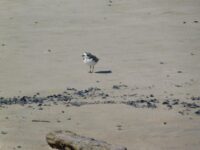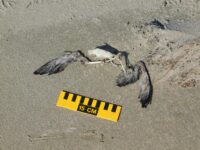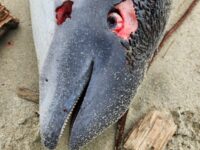Mile 202 Report
North Spit Alsea River
January 28, 2024
After finding forty beached Cassin's Auklets on Jan.
Report Details
After finding forty beached Cassin's Auklets on Jan. 19th in 200 meters on Mile 203, I was surprised not to find any beached birds today on my COASST and Mile Walk on 202, Bayshore Beach. I had to enter the beach two accesses south of my usual State Parks' access at the Bayshore Clubhouse because the dunes to the north and south, heightened by European Beach Grass plantings, have now been eroded to sheer sand cliffs. See the Google Earth photo showing State Parks' beach access 67A, then accessible in 2019 as compared to my photos from last week. I had to restrict today's walk because the northern half mile or so now doesn't allow any escape from the beach in the event of high tides or a sneaker wave. The King Tides and storms haven't been that dramatic this winter, just a fairly constant procession of rough seas and high swells. Perhaps with climate change, Bayshore Beach as seen now will become its "new normal."
Conditions
Temperature: 60 F. Cloud Cover: Partly Cloudy. Wind Velocity: Calm/Light. Tide Level: 5.5 feet.
Human Activities
Number of people: 10. Number of dogs: 4. Walking or running: 8. Sitting: 2.
Notable Wildlife
Just a few gulls and crows. None of the 30-40 Western Snowy Plovers which winter here were seen this day. After bad weather, they often seem to disappear for a few days, although I don't know where they go.
Driftline Content
Seaweeds and seagrass, Wood pieces. A lot of new driftwood, large and small, since my last report.
Natural Changes
Erosion of vegetated foredune. See my summary. I reported to our State Parks beach ranger what I consider to be hazards to beach goers because of State Parks' Oceania Drive access signs that now lead to sheer sand cliffs, suggesting that Parks put up "closed" or "warning signs." Our ranger responded that he could do that. Although the erosion on Bayshore Beach could be considered "natural changes," I believe it's largely the result of planting European Beach Grass here, mostly during the 1960's and 70's, which supposedly stabilized the dunes and heightened them. On Sandpiper Beach a mile to the north (see the attached photo), where European Beach Grass doesn't seem to have been planted, the dunes are much lower and gradual, with scrub willow and other natural vegetation, and little evidence of erosion like on Bayshore Beach.
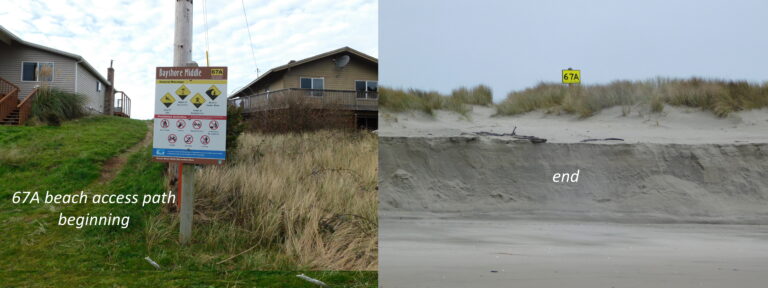
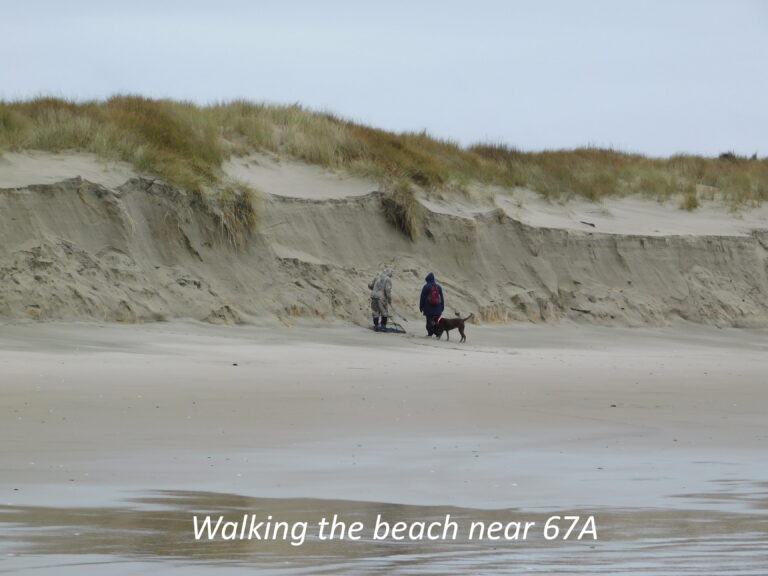
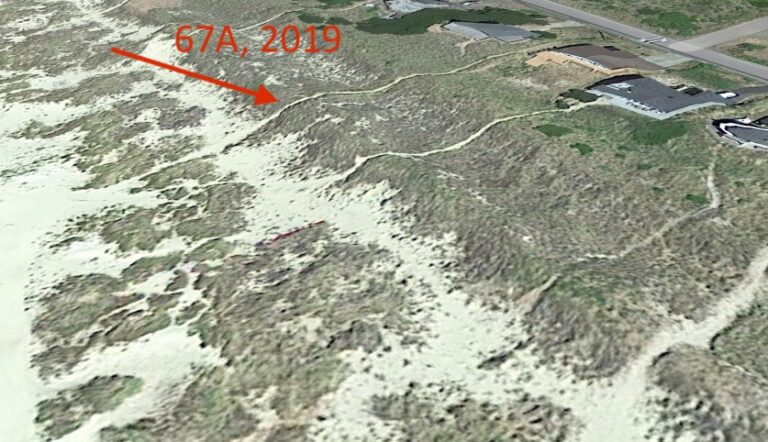

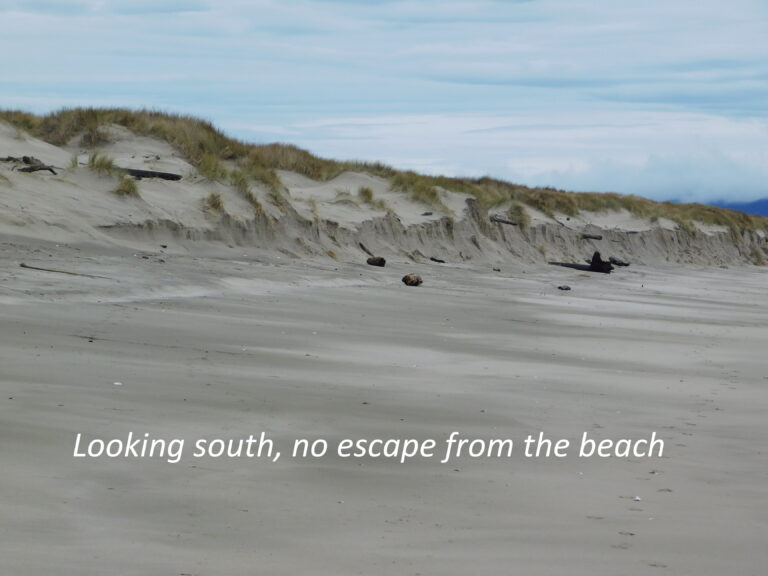
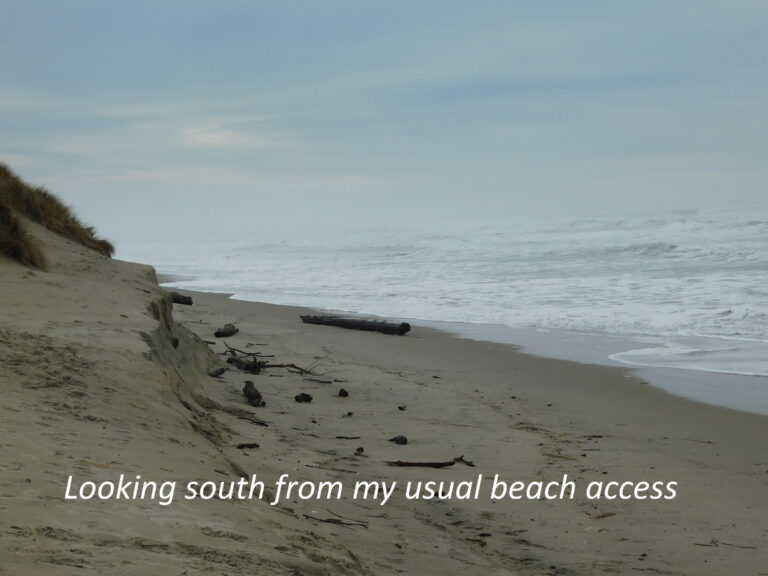
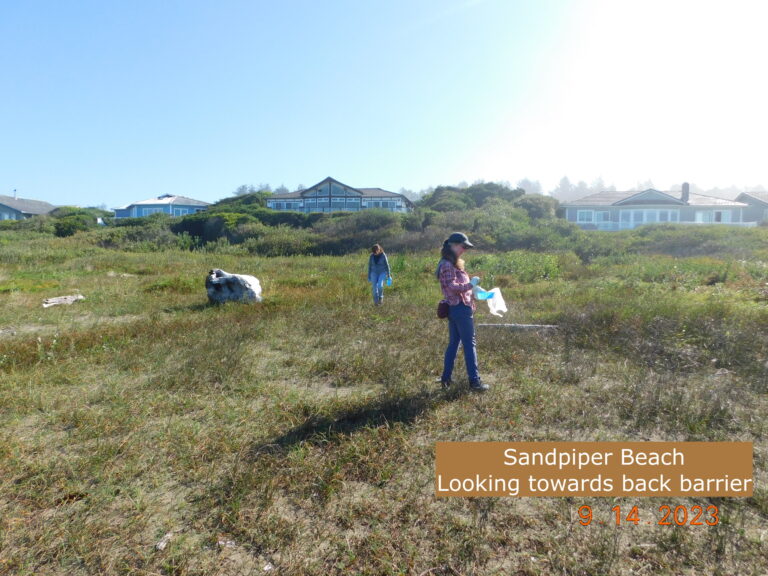
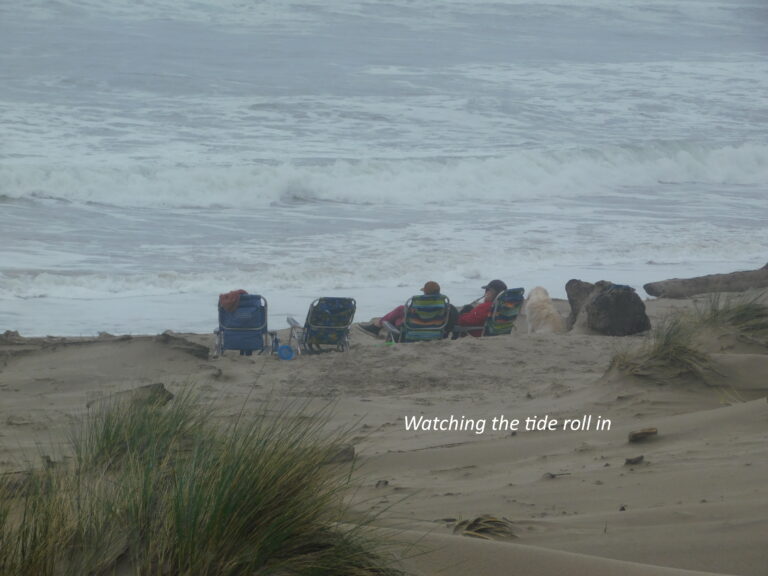
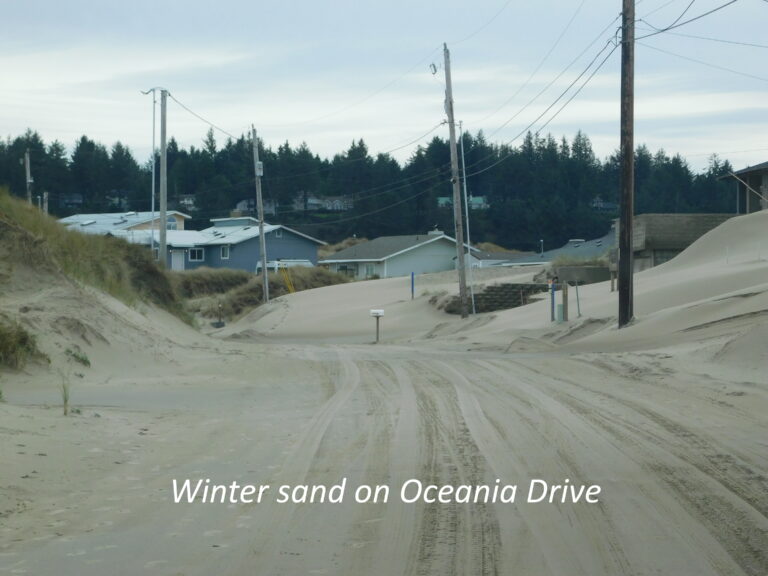
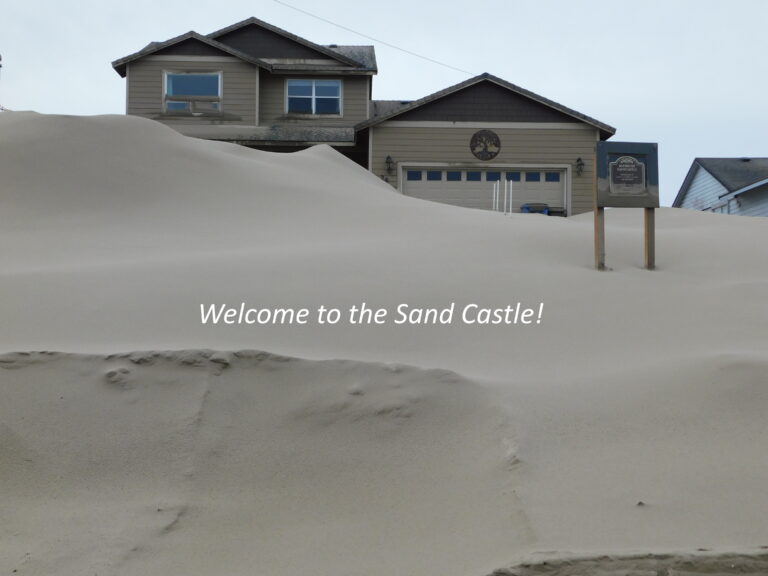
Report Images
All Mile 202 Reports
Mile 202
North Spit Alsea River
Mile 202 beach accesses and exits are now restricted because of erosion and sheering off of the sand cliffs along its northern portion, so I now need to plan for a receding tide if I want to walk the entire mile safely.
Jon French
Mile 202
North Spit Alsea River
After finding forty beached Cassin's Auklets on Jan.
Jon French
Mile 202
North Spit Alsea River
A beautifully calm, sunny day, maybe the last for awhile, with a fifteen mile view from Seal Rock to Cape Perpetua and hardly anyone on the beach except for two surf fishers and a couple valiantly trying to launch a kite with no wind.
Jon French
Mile 202
North Spit Alsea River
As I began yesterday's mile walk and monthly COASST beached bird survey, a light rain began to fall, the first in months.
Jon French
Mile 202
North Spit Alsea River
As I have done before, I combined today's walk with my monthly COASST survey for dead seabirds.
Jon French
Mile 202
North Spit Alsea River
The beach was fairly cool today after 99 degrees two days ago.
Jon French
Mile 202
North Spit Alsea River
This was my second monthly beached bird survey for COASST (Coastal Observation And Seabird Survey Team) which I combined with my mile walk.
Jon French
Mile 202
North Spit Alsea River
A dead certacean was reported to the Oregon Marine Mammal Stranding Network to be on the beach in Bayshore Oregon by Beach Entrance 67d.
JLcoasties


